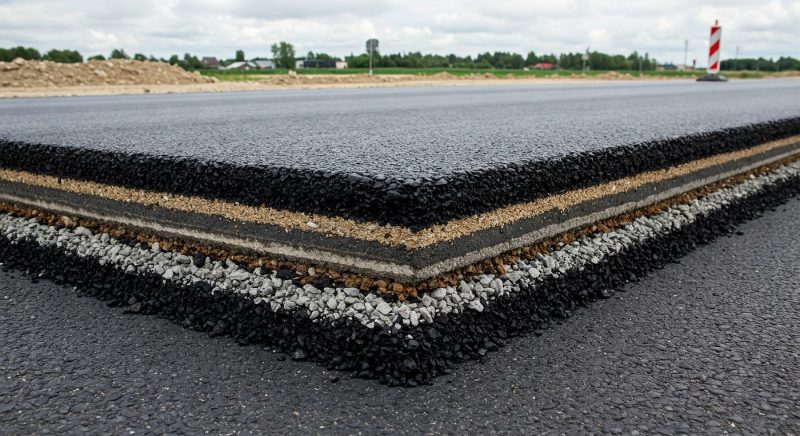Across Massachusetts, thousands of miles of roadway and over 5,000 bridges form the arteries of daily life. But when potholes crack open on a busy highway or traffic signage falls out of place, who notices before tragedy strikes? In one recent incident just outside Boston, two vehicles collided at the edge of a damaged stretch of road. There were no injuries, but the crash caused a lengthy shutdown and miles of nighttime traffic. Civil engineers, often working quietly behind the scenes, are the ones who spot early signs of these dangers and intervene before they escalate.
Among those engineers is Kishore Bandela, a Civil Engineer with the Massachusetts Department of Transportation (MassDOT). His work, like that of many colleagues, includes inspecting bridge conditions, reviewing contractor compliance, and ensuring that field realities match engineering plans. Kishore is one of many professionals focused on ensuring that infrastructure lives up to its intended standards, long before the public sees the consequences of oversight.
A System Under Strain
National data show that over 44,000 bridges across the U.S. are currently rated as “structurally deficient,” including nearly 500 in Massachusetts. As climate change increases the frequency of storms and urban growth pushes transportation systems to capacity, the challenges to keeping roads and bridges safe grow more complex. Engineers at MassDOT are responding to these challenges with a combination of fieldwork, data-driven analysis, and proactive safety checks.
“Every detail matters,” Kishore says. “A misplaced safety drum can cause confusion. A small oversight in quantity estimates can become a funding nightmare later on.”
In one case, Kishore reported improperly placed traffic signage at an active work zone where drivers were veering between lanes. His intervention led to corrective action that clarified lane arrangements and improved traffic safety. “We can’t afford confusion on roads where families and truckers are moving at 70 mph,” he adds.
Where Engineering Meets Accountability
On any given day, civil engineers across the state may be reviewing bridge deck conditions, recommending substructure repairs, or coordinating project timelines with contractors. These professionals often serve as the final check between technical plans and how infrastructure is actually built.
At MassDOT, project oversight includes the use of systems like RMS-360, which tracks construction progress, material compliance, and quality assurance. Kishore is among those who use such tools to monitor discrepancies between drawings and field conditions. In one project, a significant mismatch in estimated versus actual construction quantities could have led to expensive renegotiations. Early detection helped the agency maintain its budget and timelines.
“It’s better to get the right quantity before you jump into a contract,” Kishore explains. “Trying to add it later through change orders takes more time, paperwork, and budget approval.”
MassDOT: Managing Complexity at Scale
The impact of these engineers is amplified by the scale of MassDOT’s operations. The agency manages 36,000 lane miles of roadways, oversees the MBTA, one of the largest public transit systems in the U.S. and leads infrastructure initiatives that influence the entire New England region. Its work has received recognition through awards like America’s Transportation Awards and Environmental Excellence Awards for sustainability and innovation.
Efforts such as the GreenDOT initiative and adaptive traffic signal programs have helped reduce emissions, support multimodal transport, and improve traffic flow. According to internal assessments, signal optimizations implemented across several corridors have achieved up to 30% reductions in congestion during peak hours.
Safety, Mentorship, and Long-Term Thinking
Kishore and his colleagues are not just technical experts, many take on mentorship and project leadership roles within their teams. Whether it’s training junior engineers on best practices for inspections or collaborating with contractors to anticipate delays, the work often requires a blend of foresight and real-time responsiveness.
“You have to care about the people using the roads,” Kishore says. “That’s the only way this job makes sense.”
Engineers like him are also contributing to the future of infrastructure resilience. Kishore has submitted a research paper to an academic journal on innovations in underground water reservoir design for urban resilience. These types of thought contributions help shape how future infrastructure will adapt to the changing climate.
From Prevention to Public Value
While the public often notices infrastructure only when something fails, a wide network of engineers is continuously at work preventing those failures. Their attention to detail on signage, materials, safety protocols, and construction compliance is what ensures that infrastructure remains reliable.
At MassDOT, engineers are not just executing plans; they are refining them in real time. Their work is crucial to Massachusetts’ strategy of building safer, smarter, and more sustainable transportation systems.
“We try to solve problems before they show up in the news,” Kishore notes. “That’s the goal.”
As the state continues to face challenges from aging infrastructure and rising climate risks, professionals like Kishore Bandela represent a broader commitment: to keep the systems running smoothly, safely, and with the long view in mind. It may not be glamorous work, but its value is evident every time a bridge holds strong, a pothole is patched, or a confusing lane shift is corrected before the next car comes through.
- Revamping Rapid Delivery: How eCommerce’s Fast Delivery Got Even Faster - April 5, 2025
- Can Going Paperless in MedTech Actually Save Lives? - April 5, 2025
- When Roads Fail, Who Prevents the Next Accident? - April 5, 2025





